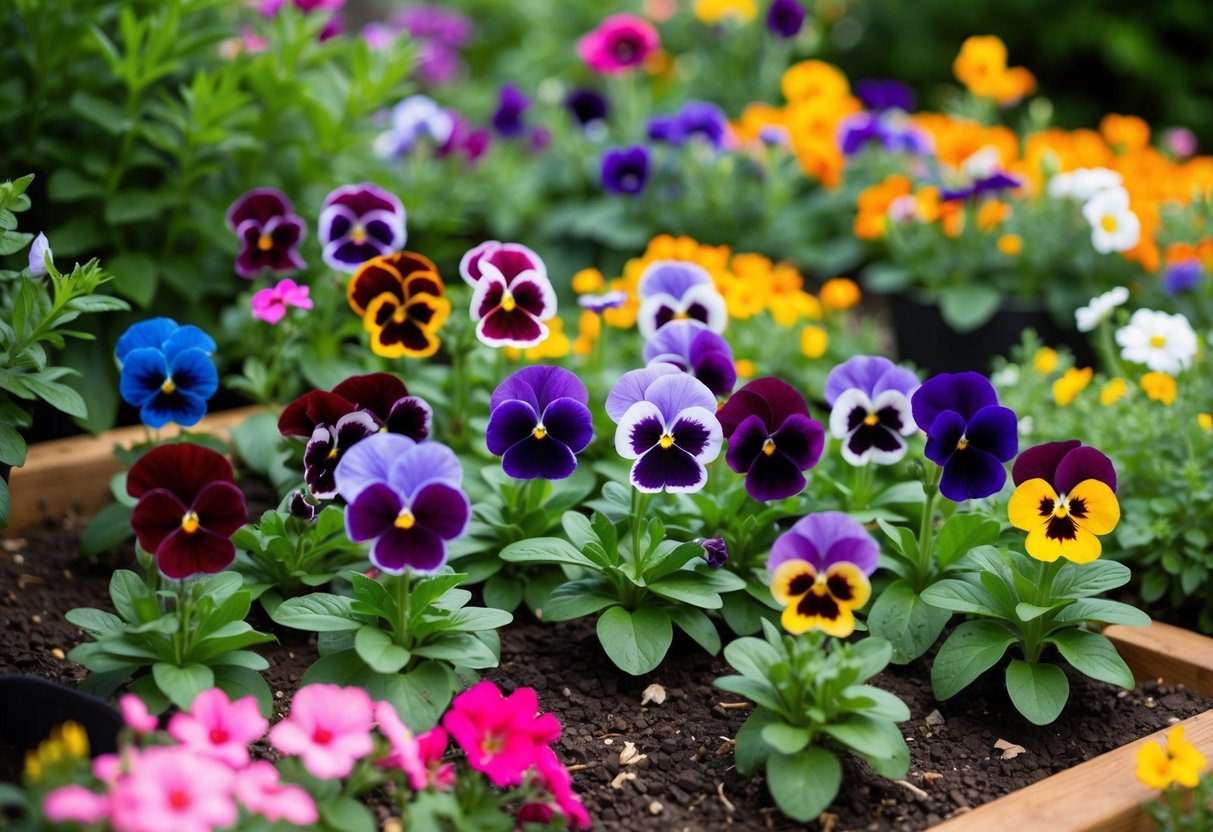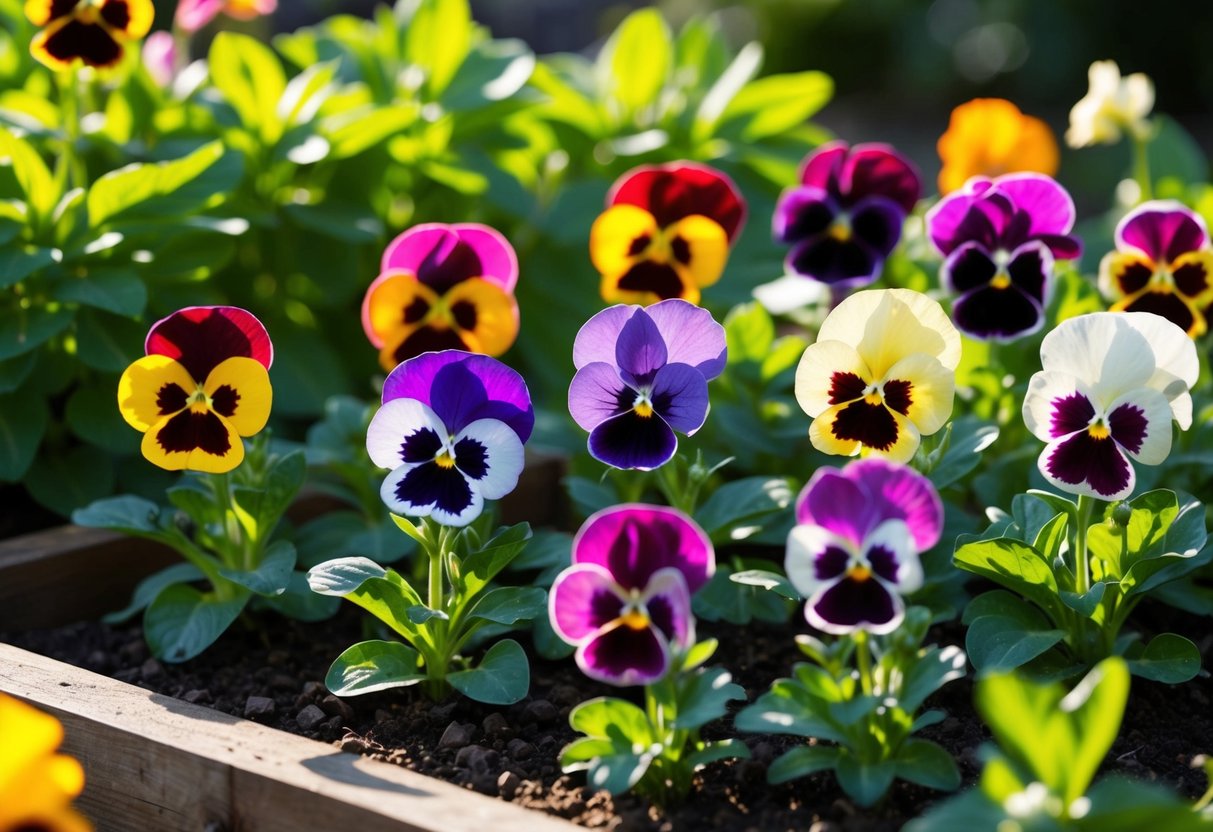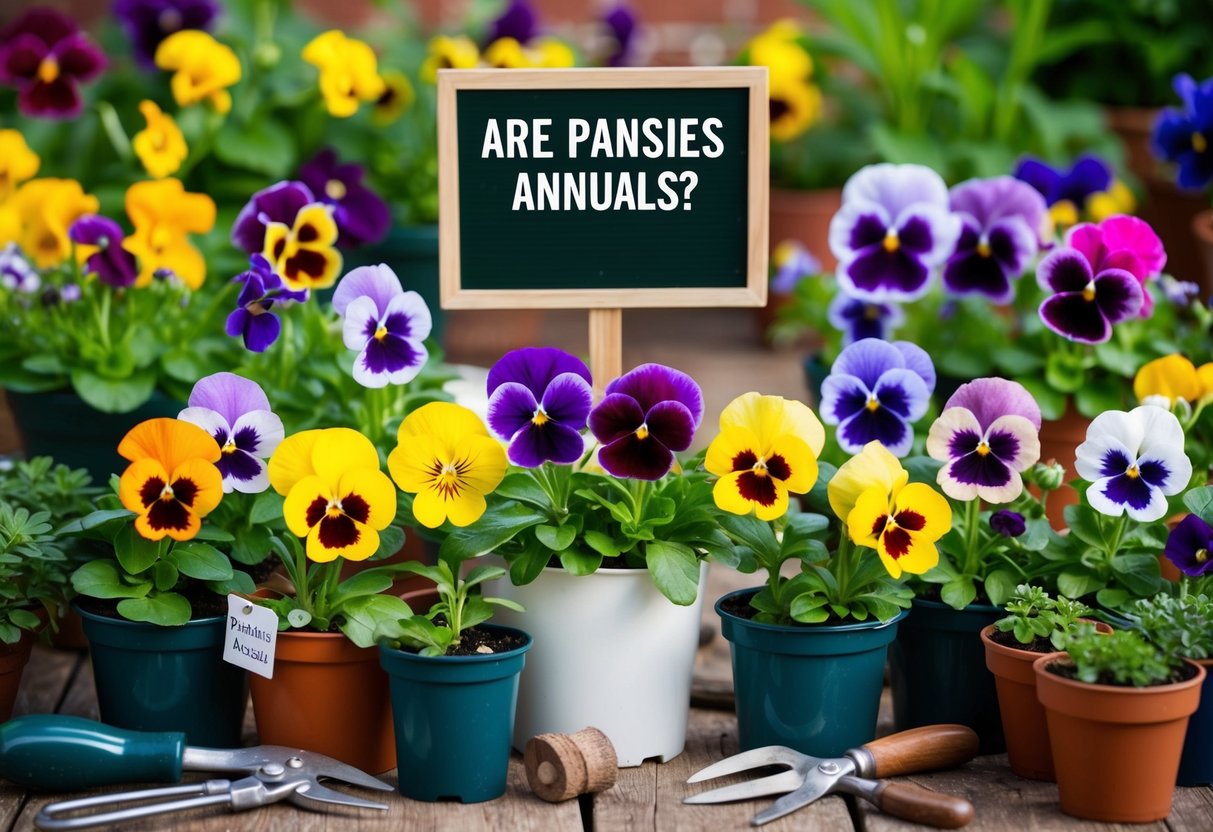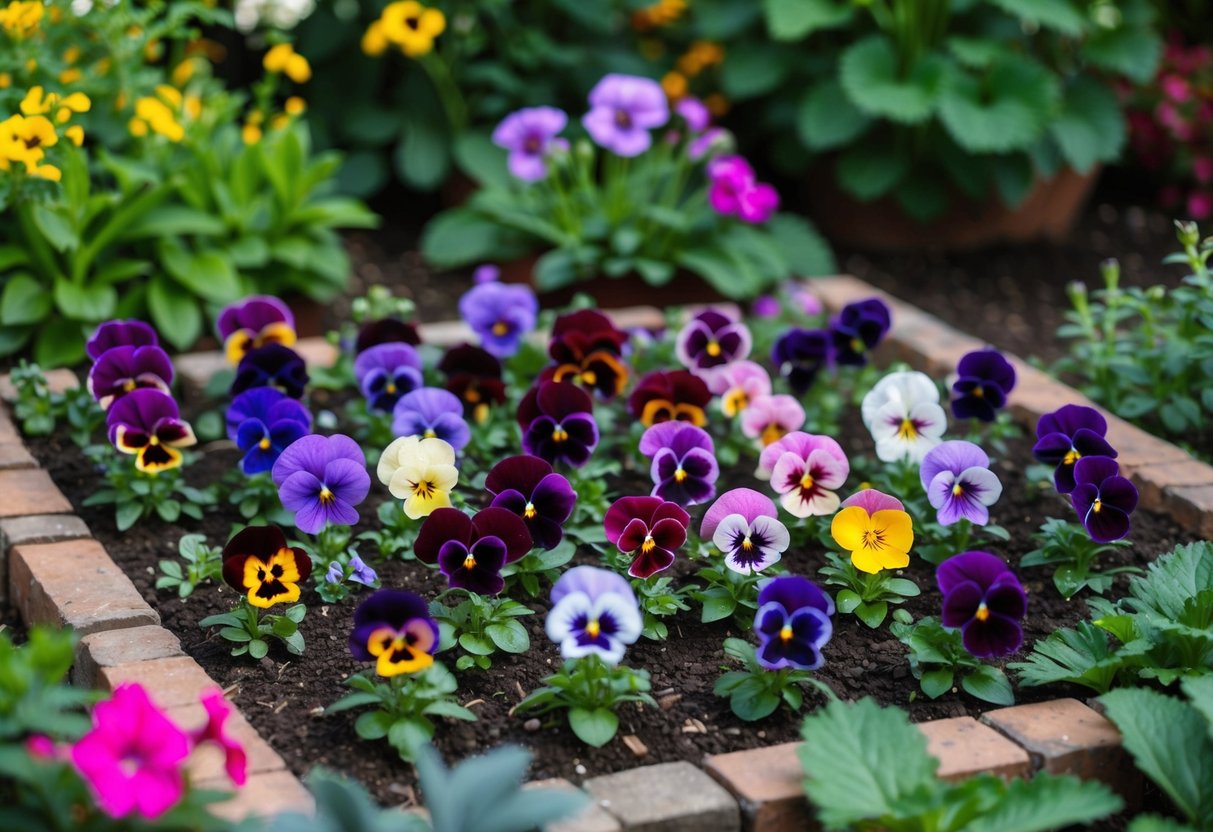Are Pansies Annuals? Understanding Their Growth Cycle
Wondering whether pansies are annuals, biennials, or perennials? You’re not alone! Many gardeners love these colorful blooms but aren’t quite sure how long they’ll stay around. Pansies are technically tender perennials but are often grown as annuals due to their sensitivity to extreme temperatures. In some regions, especially where winters are mild and summers are not too hot, they can act more like short-lived perennials or biennials.

If you live in an area with colder winters, you might treat your pansies as annuals, enjoying their bright blooms while they last through the cooler seasons. For those in USDA zones 7 to 10, pansies might reappear each year, making them seem more like perennials. It’s their ability to thrive in cooler climates that makes pansies a popular choice for early spring planting.
Pansies boast a wide variety of colors and charming “faces,” bringing cheer to gardens or containers. They’re not only pretty but also adaptable, making them a perfect addition to your garden if you’re looking for something easy to care for during the cooler months. Whether you’re planning a garden in the Midwest or the South, pansies offer a splash of color that feels just right.
Understanding Pansies

Pansies, with the botanical name Viola x wittrockiana, are known for their stunning and colorful blooms. These cool-season flowers are loved by many gardeners for their ability to brighten up gardens during cooler times of the year.
Varieties and Growth Habit
There are many pansy varieties, each with its unique traits. They typically grow to about 6 to 12 inches tall and thrive in rich soil with a cool, damp climate. The overlapping petals give them a distinct, cheerful appearance.
Pansies are great for borders or containers, providing an easy way to add vibrant colors to your space. To ensure healthy growth, plant them about 7 to 12 inches apart so they have enough space to spread. These flowers are hardy in USDA zones 7 to 10, making them a good choice for temperate climates.
Color and Bloom Time
Pansies are admired for their wide range of flower colors. These colorful blooms come in purple, yellow, orange, blue, and white, offering plenty of options for your garden palette. The color combinations often include a dark center, adding to their charm.
They bloom profusely during cooler weather. Spring is an ideal time for planting them. The plants tend to bloom until temperatures rise and summer annuals start to take over, which makes them a beloved favorite for early-season gardeners.
Planting and Care Cycle

When growing pansies, it’s important to consider factors like soil and watering. These steps help ensure your flowers flourish during the cooler months.
Soil Requirements
For planting pansies, choose a location in full or partial sun. Morning sun with afternoon shade works best. This gives the plants enough light while protecting them from intense heat.
Use well-drained soil that is rich in organic matter. You can enhance the soil by adding compost. Aim for a soil pH that is slightly acidic, typically between 6.0 and 6.5. This improves nutrient availability.
Whether you plant in a garden bed or containers, ensuring proper drainage is vital. A mix of potting soil and sand can improve drainage, preventing waterlogged roots and promoting healthy growth.
Watering and Feeding
Water pansies regularly, especially in early spring. Ensure the soil stays moist but not soggy. During dry spells, increase watering to keep the plants hydrated.
Fertilize pansies with a slow-release fertilizer every few weeks to support blooming. Opt for a balanced formula that encourages growth without burning the plants. Organic options work well for a more natural approach.
Applying mulch around the plants helps retain moisture and keeps the soil temperature stable. In humid climates, keep mulch light to prevent root rot. Proper feeding and watering routines contribute greatly to vibrant and healthy pansies.
Seasonal Behaviors

Pansies are versatile plants that can be grown in different climates. They adapt their growth patterns based on the season and local conditions, making them a popular choice for many gardeners.
Annual, Biennial, or Perennial?
Pansies can act as annuals, biennials, or short-lived perennials depending on the climate. In colder regions with frost, they often behave as annuals, planted in the spring to enjoy a short blooming season. This means you plant them and enjoy their beauty for just one growing season.
In milder climates, pansies can overwinter and may come back for multiple years. They are actually classified as short-lived perennials, but they tend to last around 3-5 seasons. This flexibility is one reason why gardeners love planting them.
In some cases, pansies can also be treated as biennials, blooming in their second year after surviving one winter. Their ability to adapt depends largely on the specific growing zone and how harsh the seasonal conditions are. This means in some areas, you might find them acting like three different types of plants.
Temperature and Humidity Tolerance
Pansies love cooler temperatures, thriving in the fall and spring. These plants are classic cool-season plants, blooming beautifully as the temperature drops. They are hardy and can handle some frost, which makes them ideal for early-spring or late-fall planting.
In hotter zones, pansies might wither during the intense heat of summer. They are best as summer annuals in these regions, providing rich color until temperatures climb.
They also dislike high humidity, which can cause them to become leggy. To maintain healthy growth, ensure they receive enough light and moisture without excessive humidity. For cooler and more moderate climates, pansies can be a dream, with blooms lasting longer when conditions align perfectly.
Common Challenges

Growing pansies involves dealing with a few common issues. These include managing pests and protecting your plants, as well as taking care of diseases that may threaten your pansies’ health.
Pests and Protection
Pansies can attract various pests that may damage your plants. Aphids, slugs, and snails are frequent visitors to pansy gardens. These pests nibble on leaves and weaken the plants.
Deer and rabbits might also munch on your pansies, so physical barriers like fences can help. For smaller pests, consider using insecticidal soap to manage insects like aphids without harming the plants.
Observe your garden regularly to catch pest problems early. Picking slugs off in the early morning or using natural barriers like eggshells might help deter them. Keep your garden tidy to reduce hiding spots for pests.
Disease Management
Diseases like powdery mildew, root rot, and gray mold can affect pansies. Powdery mildew appears as white spots, while root rot leads to droopy, wilting plants.
To prevent these, ensure your pansies are planted in well-drained soil and have good air circulation. Crown rot and rust might also affect the appearance and health of the plants.
Use fungicides if needed and avoid overwatering to reduce the risk of rot. Remove affected leaves promptly to prevent the spread of diseases. By keeping a close watch, you can maintain the vibrant beauty of your pansies.
Creative Uses in Gardens

Pansies are versatile, colorful flowers that can be used in various ways in your garden. They are perfect for borders, window boxes, and hanging baskets and even offer some edible uses.
Landscaping with Pansies
Pansies are excellent for adding bursts of color to your garden, especially in cool weather. These hardy garden flowers thrive in moderate temperatures, making them perfect for seasonal borders. You might consider using them in hanging baskets or window boxes, where their bright colors stand out beautifully.
For a striking effect, plant them in clusters. Varieties like the ‘Jolly Joker’ and ‘Princess Series’ offer unique patterns and colors. Pansies also complement other low maintenance plants, ensuring your garden remains vibrant with little effort. Deadheading and pruning pansies regularly will keep them blooming consistently through the season.
Edible and Ornamental Use
Pansies aren’t just pretty; they are also edible flowers. They make great garnishes for dishes or salads. You can grow pansies from seed to ensure they are free of pesticides, making them safe to eat. Their mild flavor and bright colors are a delightful addition to any plate.
In gardens, pansies serve as decorative elements and a practical choice. With proper watering and maintenance, they can thrive in warmer regions. Propagating pansies is another way to ensure you have a recurrent supply, as they can reseed in favorable conditions. Enjoy them in various forms—be it in your garden or on your plate.







